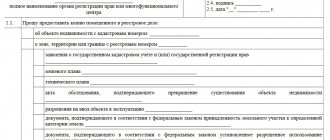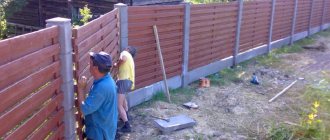Is a garden house a residential or non-residential premises?
Based on the above, a garden house can be considered both a residential and non-residential building, it all depends on its condition, arrangement and many other factors. Until 2021, the concept of “garden plot” was divided into several others. It was allowed to build both residential and non-residential buildings. And if the building was at one time registered as residential, then after 2021 no amendments are required. The house will automatically receive residential status.
On the other hand, if the house is being built after 2021 or has not previously been registered as residential, it will first have to be given the status of a residential building. Otherwise, you will not be able to register in it.
This is important to know: The law on silence in SNT
The difference between a residential and non-residential house on a summer cottage
To understand the difference between a residential and non-residential building, you need to consider the requirements that apply to residential buildings located on a garden plot. It is these parameters that distinguish these buildings.
Requirements for a residential building
A residential cottage (house) must meet the following requirements:
- Structural elements and fences must ensure the safety of the property of the owners and must not threaten their lives.
- All main communications must be connected (electricity, water, sewerage, gas, and so on). In some regions where it is not possible to supply, for example, gas or sewerage, this requirement may be partially ignored.
- The temperature inside a residential building in winter should not fall below 18 degrees.
- The air humidity inside the house should not be higher than 60%.
- The plot and the house itself must be registered as private property.
- There should be no encumbrance placed on the house and the plot.
Area of premises of a residential building
In addition to the above, additional requirements are put forward for the area of premises inside the house:
| Room | Recommended area |
| Bedroom | From 7 sq.m. |
| Room | From 12 sq.m. |
| Kitchen | From 6 sq.m. |
| Bathroom | From 1.8 sq.m. |
| Toilet | From 0.96 sq.m. |
At the same time, the ceiling height in above-ground premises must be at least 2.5 meters, and in the basement - at least 2 meters.
Ownership of land and common property of an apartment building
Buying an apartment in a new building involves not only the transfer of ownership of the premises. This is also a number of features of owning parts of a land plot.
The land plot becomes the common shared property of apartment buyers after registration and cadastral registration.
This is important to know: How to evict alcoholic neighbors from a municipal apartment
Public premises, elements of improvement and functional support of the building belong to common shared ownership.
These parts of the property cannot be allocated in kind for alienation or other disposal, and separate rights are not issued for the land plot related to the apartment in the house.
The previous paragraph reveals the peculiarity of the right - ownership of the land under an apartment building is confirmed when purchasing an apartment, but cannot be realized in kind or by alienation.
All this matters; these features should be known, but they are not decisive when choosing an apartment or a new building. However, there are several features that you should be aware of in order to avoid becoming a victim of deception.
What is the best way to register a country house?
If the country house is already registered as a residential building (until 2021) and the only problem is to give it an address (and get the opportunity to obtain permanent registration), then it is enough to contact the local administration and demand that a real address be assigned to this property. Usually this is done on demand.
If the house is not yet residential, you will have to first recognize it as such and only then require an address to be assigned.
Procedure
- Order a technical report. Since a commission is not appointed to inspect the house and the decision is made only on the basis of the documents provided by the applicant, such a conclusion from any qualified expert who has all the necessary licenses is mandatory. The conclusion indicates all the basic information with which the administration can decide whether to consider a given house residential or not.
- Prepare all documents (see sample list below).
- Submission of documents and applications to the MFC (My Documents) or local administration.
- Waiting and receiving a decision.
- Making changes to Rosreestr.
- Request to assign a house address.
Documentation
The main point in the procedure for recognizing a house as residential is contacting the administration or the MFC. To do this you need a certain list of documents:
- Expert opinion regarding the condition of the house.
- Application to the MFC or local administration (filled out on site).
- Passports of all property owners.
- Notarized consent of all property owners to change its status.
- Permission from the guardianship authorities if there are minors among the co-owners.
- Extract from the Unified State Register of Real Estate.
- Technical passport and cadastral passport.
- Legal documents.
Expenses
Despite the fact that the procedure for transferring a garden house to residential status is formally free, in fact you will have to incur some costs associated with the preparation of documentation and subsequent registration of changes:
| Type of expenses | Approximate amount |
| Technical conclusion | From 15 thousand rubles |
| Notarial consent of owners | From 1 thousand rubles for each owner |
| Changes in Rosreestr | 2000 rubles |
| Extract from the Unified State Register of Real Estate | 350 rubles |
| New technical passport | From 10 thousand rubles |
| Document recovery | From 5 thousand rubles |
Deadlines
The timing largely depends on the applicant himself, but there are some points he cannot control:
- Drawing up a technical report: up to 3 weeks (less often, more).
- Receiving a decision from the administration: up to 45 days from the date of submission of all papers.
- Registration of changes in the registry: up to 2 weeks.
FREE CONSULTATIONS are available for you! If you want to solve exactly your problem, then
:
- describe your situation to a lawyer in an online chat;
- write a question in the form below;
Residential premises or apartment: the difference 2021
09/05/2016 video blog by AN Mandarin
It may seem that the status of residential premises and apartments is no different from each other, but from the point of view of legal status this is not the case. Each of these objects has a clear legal status established by law. Thus, Article 16 of the Housing Code of the Russian Federation, which describes the types of residential premises, regulates the concept of an apartment. It is understood as a properly structurally separate room located in an apartment building, in which there is direct access to common areas. It may consist of one or more rooms, as well as other premises for auxiliary use, which are intended for the residents of the apartment to satisfy their daily household needs associated with living in such a structurally separate room.
In turn, Article 15 of the code explains which objects should be recognized as residential premises. To do this, it must be:
- isolated;
- had the status of a real estate object;
- was suitable for permanent residence there.
In order for a premises to be considered suitable for habitation, it must meet numerous legal requirements to ensure the safety of the occupants. The concept of “residential premises” should be interpreted more broadly than the concept of “apartment”, since the latter is included in the former. Not every residential space is an apartment, but every apartment is a residential space. Among residential premises there are also “part of the house”, “house”, “part of the room” or “room”.
The transfer of ownership of an apartment also involves receiving a corresponding extract from the Unified State Register, which will officially reflect the type of ownership - “apartment”, but will not indicate the purpose of the land. There is no need for this because the apartment can only be located in an apartment building. This object, in turn, is located on land with the legal status of “Land of populated areas - multi-apartment residential building”. If the premises have the status of “apartment”, this already implies that all the permits necessary for communications, engineering systems and the like have already been obtained legally. Apartments can be alienated in accordance with the law, including to foreign citizens.
The “residential premises” status of a real estate property requires receiving two extracts from the Unified State Register. In the first, in the “type of ownership” section, the status of the object will be reflected - “residential premises”. The second extract includes data on all shares of co-owners of the land plot on which the apartment building is located. The status of this land will be different in this case and will be called “Land of populated areas - for individual residential construction.” If a property is assigned this status, then foreign citizens will not be able to purchase it - this is prohibited by the current legislation of Russia. In this context, questions may arise:
- Were the technical conditions for connecting communications to the house met?
- In what year was the house officially put into operation and when was the construction work carried out?
Why are these questions important? Starting from September 1, 2015, regulations came into force establishing a ban on the construction of an apartment building on an individual residential construction site, as well as its transfer to the status of residential premises. Previously, development companies or individuals often built apartment buildings on individual housing construction plots - this was beneficial for them, since the legislation allowed these possibilities. Properties built on individual housing construction allowed only three floors. The developer received permission to build a three-story house, after which, based on the reconstruction, he received permission for the entire facility - de-iure, it turned out to be legal. Accordingly, the developer became the legal owner of all premises and the building as a whole.
Technical supervision services were given the opportunity to carry out an inspection only before the building was put into operation. It would be reasonable to ask how those technical conditions for the behavior of communications, which are designed exclusively for an individual residential building, are applied in the construction of an actual apartment building. After all, sewerage, gas supply, and water must be supplied to dozens of apartments. It’s simple - responsible development companies in the city of Adler receive real technical conditions corresponding to the actual number of apartments. Thus, there is no reason for those living in the apartments to worry about any issues.
So, if the houses were put into operation before the changes came into force on September 1, 2015, developers should not be afraid of hypothetical claims from the city administration. Premises that have been assigned the status of “residential” can be purchased without fear. However, there will be no reason for concern only if the correct technical conditions have been obtained for the object - this is the main thing.
With regard to other factors, there is no difference between “residential premises” and “apartment”. Real estate objects can equally be transferred into ownership, people can be registered in them, they can participate in the mortgage. The only drawback of “residential premises” is the prohibition on its alienation to foreign citizens.
It may seem that the status of residential premises and apartments is no different from each other, but from the point of view of legal status this is not the case. Each of these objects has a clear legal status established by law. Thus, Article 16 of the Housing Code of the Russian Federation, which describes the types of residential premises, regulates the concept of an apartment. It is understood as a properly structurally separate room located in an apartment building, in which there is direct access to common areas. It may consist of one or more rooms, as well as other premises for auxiliary use, which are intended for the residents of the apartment to satisfy their daily household needs associated with living in such a structurally separate room.
This is interesting: Benefits for teachers: in the city and in rural areas, what they are and how to get them in 2021
3. An apartment is recognized as a structurally separate room in an apartment building, providing direct access to the common areas in such a house and consisting of one or more rooms, as well as premises for auxiliary use, intended to satisfy citizens’ household and other needs related to their residence in such a separate room.
In fact, the differences are only in the execution of documents: in the Certificate of Ownership of the land plot on which the apartment building with premises in the status of “apartment” is located, the purpose of the land is indicated as “Land of populated areas - apartment building.” If the buyer is offered to purchase residential premises, then the Certificate of Land Title will indicate “Land of settlements - for individual housing construction or for gardening.” Both the premises and the apartment have the same purpose: residential and one can seize this property.
Marianna Shmigirilova : The criteria for issuing loans to objects have become stricter for all market objects in principle. Since multi-apartment residential buildings have a project and a building permit, of course, it is easier for them to cooperate with banks. Residential premises are smaller objects, these are low-rise buildings, it is more difficult for them to compete in the market with apartment buildings. We can say that the requirements for everyone have increased, but it has become more difficult for residential premises to compete in relation to apartments.
Some realtors assure their clients: there is no difference between the statuses “apartment” and “residential premises”. In fact, the differences begin at the stage of paperwork: in the certificate of ownership of the land plot on which an apartment building with premises in the status of “apartment” is located, the purpose of the land is indicated as “Land of populated areas - multi-apartment residential building.” If the buyer is offered to purchase residential premises, then the certificate of land ownership will indicate “Land of populated areas - for individual residential construction.”
In accordance with the Town Planning Code of the Russian Federation, the maximum permissible number of floors in residential buildings built on land plots with permitted use “for individual housing construction” is 3. To legalize the construction of a building with more floors, developers resort to tricks. The diagram looks like this:
Permits for the construction of these facilities will look similar. In the permit for the construction of a house with “apartment” status, in the line “name of the capital construction object” the “multi-apartment residential building” will be indicated. The permit for the construction of a house with the status of “residential premises” will indicate “individual residential building,” respectively.
Article 16 of the Housing Code of the Russian Federation “Types of residential premises” states that these include residential buildings and their parts, apartments (as well as parts of apartments) and rooms. Article 15 explains the status of “residential premises” in detail: an isolated property suitable for permanent residence. This premises must comply with SNiP and legal requirements. Under certain conditions, a residential premises may be declared unfit for habitation. In fact, residential premises are a broad concept, the structure of which includes the concept of “apartment”, and in addition to it - “residential building”, “room”, “part of the room”, “part of the house”.
3. An apartment is recognized as a structurally separate room in an apartment building, providing direct access to the common areas in such a house and consisting of one or more rooms, as well as premises for auxiliary use, intended to satisfy citizens’ household and other needs related to their residence in such a separate room.
Note. The procedure for recognizing a premises as a residential premises and the requirements that a residential premises must meet, including its adaptation taking into account the needs of people with disabilities, are established by legislative acts of the Russian Federation (Part 3, Article 15 of the RF Housing Code; Clause 1 of the Regulations, approved by the Decree of the Government of the Russian Federation dated 01/28/2006 N 47).
The status of an apartment and the status of a residential premises are practically no different. The only difference is that when we buy an apartment, we will have one certificate of ownership and it will say “apartment”. And if we buy residential premises, then we will have two certificates: one for the ownership of the residential premises, and the second for the ownership of part of the land under this house. This part of the land is transferred by the developer to the buyer under a gift agreement. Except in cases where the land under the house is leased, in which case the buyer will have one certificate for the residential premises.
The mortgage was approved. But 90% of new buildings have residential status. No one can explain what is the difference between an apartment and a living space; they say that there is nothing wrong with it - it’s all legal. But I don't believe it. After all, these houses are built by individuals. faces. Tell me what to do. Sberbank allows residential premises. What problems may I encounter after purchasing such a home? I found out that such miracles do not happen in other cities. THANKS A LOT.
So what is the difference between an apartment and an apartment? Apartments belong to the non-residential stock and can even be located on the territory of office shopping centers, while an apartment is a housing stock. However, these two categories of real estate have one thing in common - they are truly intended for living!
Note. The procedure for recognizing a premises as a residential premises and the requirements that a residential premises must meet, including its adaptation taking into account the needs of people with disabilities, are established by legislative acts of the Russian Federation (Part 3 of Article 15 of the Housing Code of the Russian Federation; Clause 1 of the Regulations, approved by the Decree of the Government of the Russian Federation dated 01/28/2006 N 47).
Thus, a residential premises is recognized as an isolated premises, which is real estate and is suitable for permanent residence of citizens (meets established sanitary and technical rules and standards, and other legal requirements) (Part 2 of Article 15 of the RF Housing Code).
This is interesting: Cleaning up local areas of garbage in 2021
Hello! Tell me, in a legal sense, what is the difference between residential premises and an apartment, and what difficulties in registration, registration, etc. can be encountered in connection with the purchase of residential premises?
At first the house was a dormitory, then it was given non-residential status; there were offices inside. Now reconstruction has been carried out there, apartments are being sold there, but the registry office retains the status of residential premises, not apartments or rooms. Can we claim a 13% tax refund on our purchase?
I don’t have any documents, since the purchase is only being considered.
Each apartment is also a living space. But not every residential space is necessarily an apartment, because... There are other types of residential premises.
Article 16. Types of residential premises 1. Residential premises include:
1) residential building, part of a residential building;
2) apartment, part of an apartment;
2. A residential building is recognized as an individually defined building, which consists of rooms, as well as premises for auxiliary use, intended to satisfy citizens’ household and other needs related to their residence in such a building.
3. An apartment is recognized as a structurally separate room in an apartment building, providing direct access to the common areas in such a house and consisting of one or more rooms, as well as premises for auxiliary use, intended to satisfy citizens’ household and other needs related to their residence in such a separate room.
4. A room is recognized as a part of a residential building or apartment intended for use as a place of direct residence of citizens in a residential building or apartment.
It’s just that to purchase at the moment we are considering what, according to the documents, is not an apartment, but a living space. and the seller said that legally there is a difference even with registration.
This is precisely what raises the question: what differences will there be during registration and registration?
Sorry, Katya, I always recommend that everyone get information directly from documents, and not from words. Don't forget that you and the seller have opposing interests. He would like to get the money as soon as possible, but grass won’t grow there. You need to not miss any nuances, for which you will then have to pay extra. What is the difference according to the seller?
In short, post the text of the certificate of state registration of ownership of this residential premises. Let's see.
Good day, Katya!
Based on Part 1 of Article 16 of the Housing Code of the Russian Federation (hereinafter referred to as the Housing Code of the Russian Federation), residential premises include: - a residential building, part of a residential building; - apartment, part of an apartment; - room. In accordance with parts 2, 3 and 4 of the same article of the Housing Code of the Russian Federation, a residential building is recognized as an individually defined building, which consists of rooms, as well as premises for auxiliary use, intended to satisfy citizens' household and other needs related to their residence in such a building. An apartment is recognized as a structurally separate room in an apartment building, providing direct access to the common areas in such a house and consisting of one or more rooms, as well as auxiliary premises intended to satisfy citizens' household and other needs related to their residence in such a separate apartment. indoors. A room is recognized as a part of a residential building or apartment intended for use as a place of direct residence of citizens in a residential building or apartment. From here, it should be concluded that legally residential premises are no different from an apartment insofar as the apartment is a residential premises. In your case, if the address of the apartment is not indicated when preparing a cadastral passport for a residential premises, it may be difficult to obtain a certificate of registration of the transfer of ownership.
I don’t have any documents, since the purchase is only being considered.
Dear Katya! When buying real estate, my friends and I always start “considering the purchase” from the documents, and not from the premises. And only if everything in the documents suits me (you can request scans or copies by email) do I begin to check whether the premises correspond to the documents, whether there are any illegal redevelopments, etc.
They refuse to show documents - just say “goodbye”.
I’m very happy for you, both the apartment and the documents are important to me, probably that’s why I’m asking you to answer the questions?







